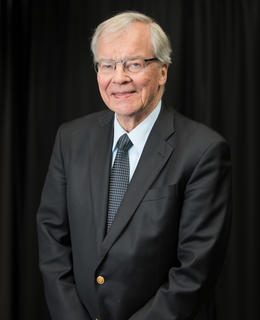
Dr. John Tyberg
Positions
Professor Emeritus
Cumming School of Medicine, Department of Cardiac Sciences
Professor Emeritus
Cumming School of Medicine, Department of Physiology and Pharmacology
Member
Libin Cardiovascular Institute
Emeritus Member
Hotchkiss Brain Institute
Contact information
Background
Educational Background
B.A. Other Social Sciences, Bethel Coll & Seminary (Minn), 1960
Doctor of Medicine Physiology, University of Minnesota, 1967
Doctor of Philosophy Medicine, University of Minnesota, 1972
Biography
Dr. Tyberg was born in Wisconsin. He completed his pre-medical studies (B.A. with highest honors; 1960) at Bethel College, St. Paul, and his graduate (Ph.D., Physiology; 1967) and medical (M.D.; 1972) degrees at the University of Minnesota in Minneapolis. He did a post-doctoral research fellowship with Dr. Edmund Sonnenblick at Harvard Medical School. Before coming to the University of Calgary in 1981 he worked at the Cedars-Sinai Medical Center in Los Angeles and the Cardiovascular Research Institute, University of California, San Francisco. He has supervised more than 50 graduate students or post-doctoral research fellows during his career and is listed as an author of more than 190 publications, mostly focused on cardiac mechanics and dynamics, pericardium-mediated ventricular interaction, how changes in venous capacitance modulate cardiac output, and how waves are propagated and reflected in the vasculature.
Research
Areas of Research
Earlier in my career, I made contributions in the areas of myocardial ischemic dysfunction, pericardium constraint, and venous capacitance. For the past 15 years, my attention has turned increasingly to wave propagation in the arterial and venous vasculature. I have used “wave intensity analysis”, a method of analyzing blood pressure and velocity developed by Professor Kim Parker that defines the power/energy associated with forward- or backward-traveling waves and whether they increase pressure (compression waves) or decrease pressure (decompression waves) as they pass.
More recently, I and my trainees developed the “reservoir-wave approach”, the central thesis of which is that measured pressure should be understood as the instantaneous sum of a volume-related pressure (i.e., reservoir or Windkessel pressure) and a wave-related pressure (i.e., excess pressure). Reservoir pressure is calculated by assuming that the change in reservoir pressure is proportional to its change in volume. We subtract reservoir pressure from measured pressure and perform wave intensity analysis on excess pressure.
This approach enabled us to define wave propagation and reflection in the canine aorta and to show how it is modified by vasodilatation and vasoconstriction. This approach also enabled us to divide systemic vascular resistance into its series components: large-artery, arterial reservoir, micro-circulatory, venous reservoir, and large-vein resistances.Using this approach, I and Dr. Marc Poulin last year applied for and received a CIHR grant to study the cerebral circulation. Not surprisingly, our preliminary data led us to hypothesize that hypercapnia and hypoxia will decrease total cerebral vascular resistance and hypocapnia will increase it. The decreases in resistance with hypercapnia and hypoxia will be partially accounted for by decreases in micro-circulatory resistance and the increase with hypocapnia, by an increase in arterial reservoir resistance. The preliminary data also led us to hypothesize that P∞, a model-based parameter that is the pressure at which arterial outflow would stop theoretically, will decrease with both hypocapnia and hypoxia. These insights may prove to be important, clinically.
Are you the profile owner?
Login to edit.
